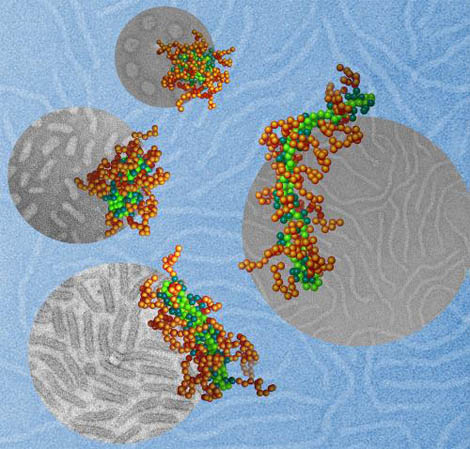 In the early 80s, in Zurich, Germany, a journey through the world of nanoparticles began, with countless applications. This gave rise to an area dedicated to the study of the characteristics and applicability of extremely small structures, nanometric scale, nanotechnology.
In the early 80s, in Zurich, Germany, a journey through the world of nanoparticles began, with countless applications. This gave rise to an area dedicated to the study of the characteristics and applicability of extremely small structures, nanometric scale, nanotechnology.
These structures can be prepared by different technologies and, depending on the materials used in their production, they are classified as: polymeric, polysaccharide, protein and lipid. Currently, nanoparticles are used as a form of drug delivery, cancer marking and imaging, among many other technological applications.
In a study first published online on October 11 in the journal Advanced Materials, the influence of the geometric shape of carrier nanoparticles on the effectiveness of gene therapy and as an alternative to the use of viruses is evaluated.
Gene therapy consists of inserting functional genes into cells with “defective” genes in order to replace or complement these disease-causing genes until they regain their normal functionality.
The polymeric nanoparticle, used as a carrier, degrades harmlessly, releasing the DNA that allows cells to use it to produce the missing functional proteins.
The nanoparticles produced in this study were obtained by packaging DNA with polymers, exposed to several dilutions of an organic solvent, acquiring defined geometric shapes, with a protective “shield” around the genetic material, which prevents its elimination by the immune system.
The tests were carried out on animals, using the same type of nanoparticles and the same DNA. The only difference lies in the geometric shape of the particles produced: rod, serpentine and spherical.
Gene expression was reported with 1600 times greater efficiency in liver cells with serpentine-shaped particles. The results obtained allow researchers to believe that the production of nanoparticles with this geometric shape could be the most effective way to develop gene therapy for these cells.
Author: scallop daisy
Science in the Regional Press – Ciência Viva
Article reference
Xuan Jiang, Wei Qu, Deng Pan, Yong Ren, John-Michael Williford, Honggang Cui, Erik Luijten, Hai-Quan Mao. Plasmid-Templated Shape Control of Condensed DNA–Block Copolymer Nanoparticles. Advanced Materials, 12 October 2012.
http://onlinelibrary.wiley.com/doi/10.1002/adma.201202932/full


















Comments